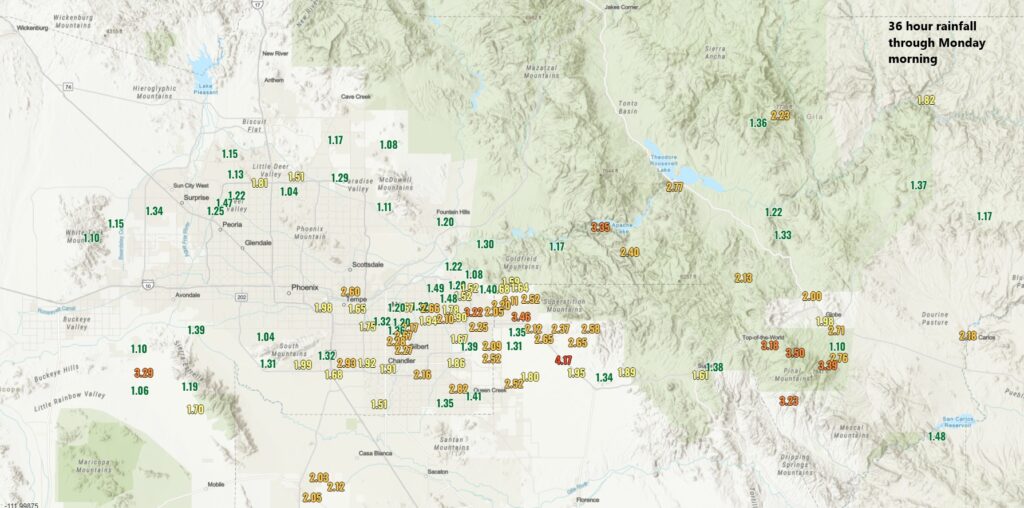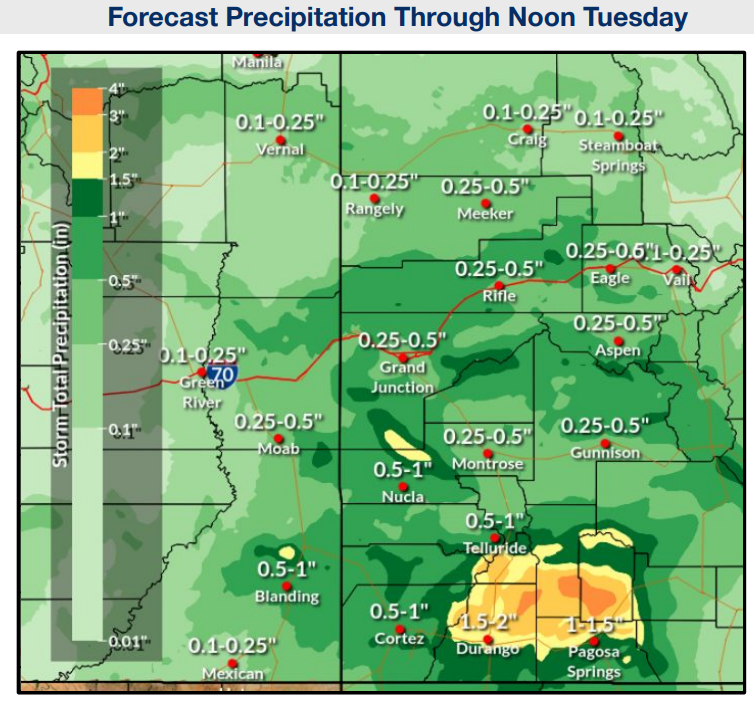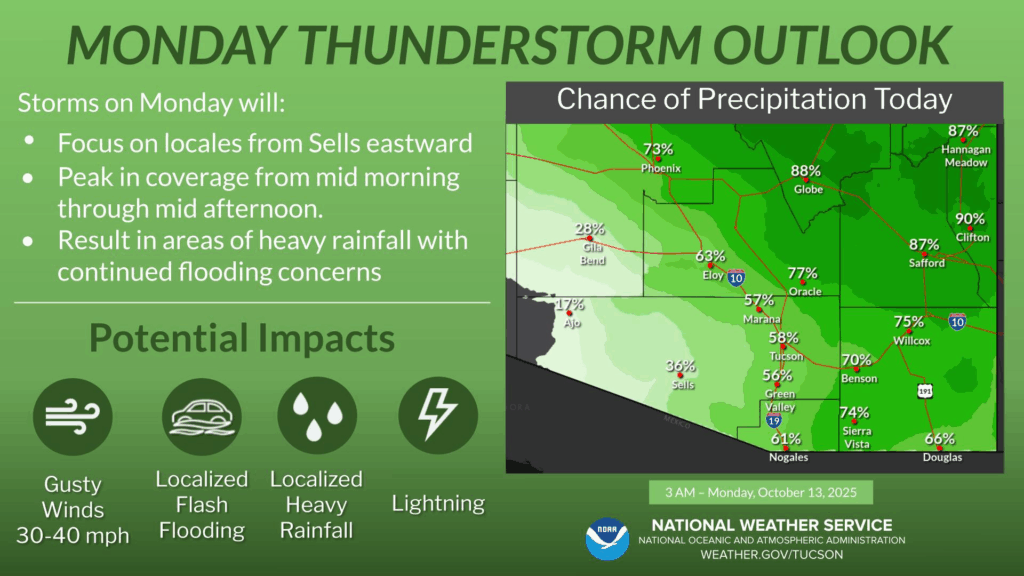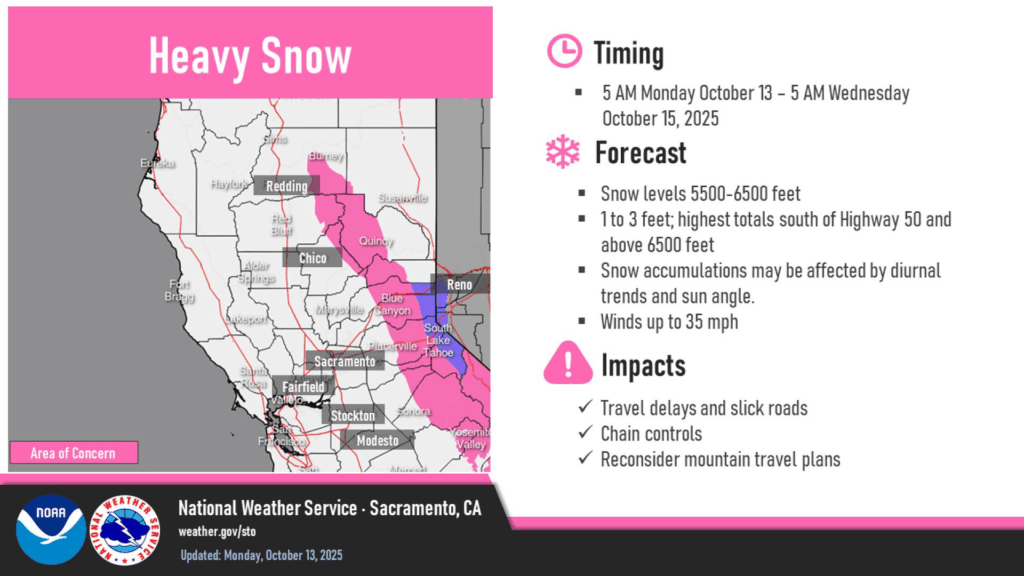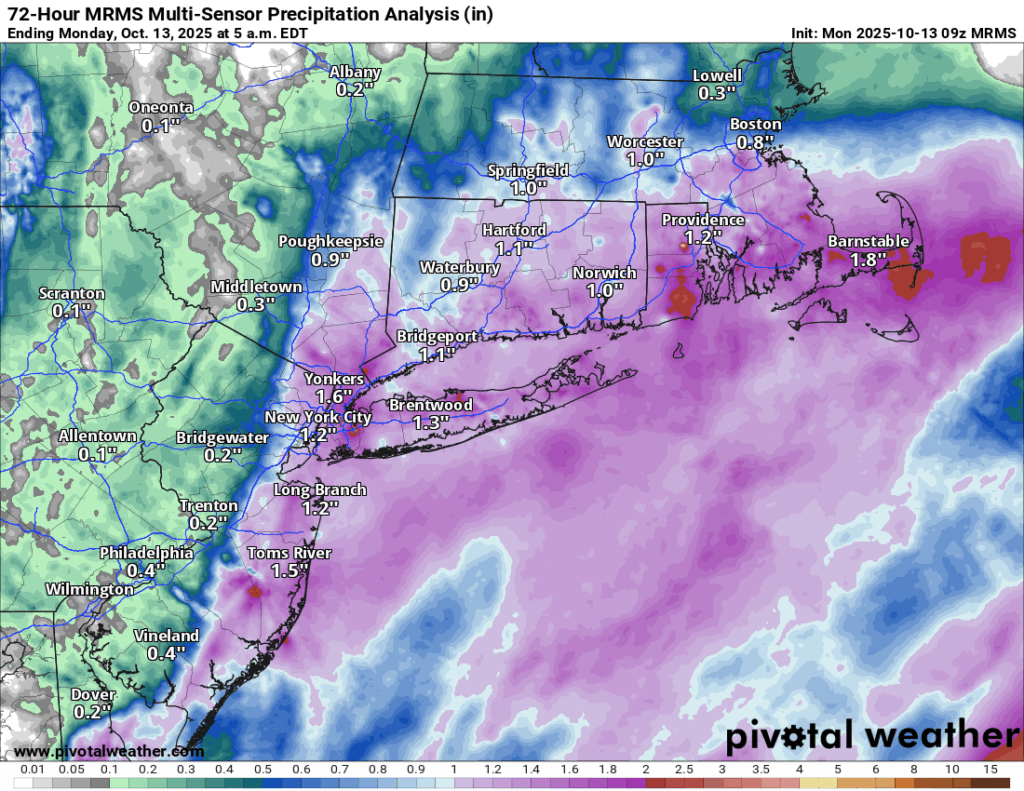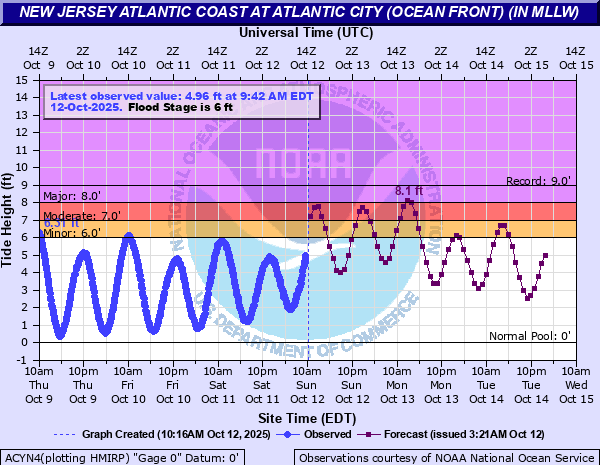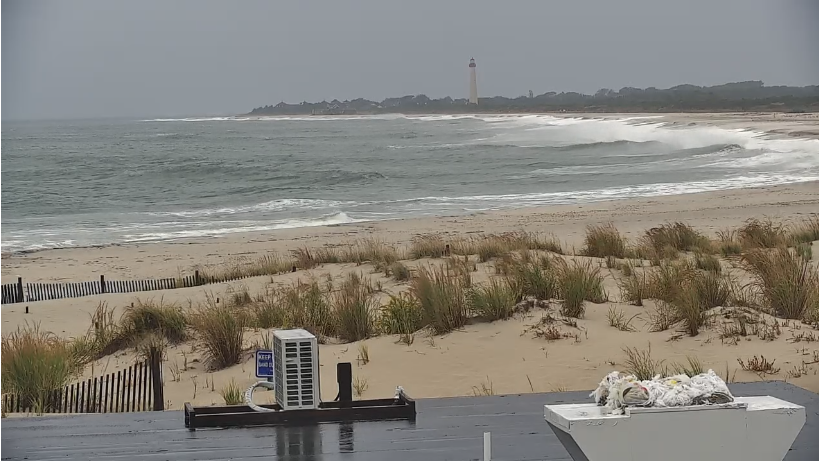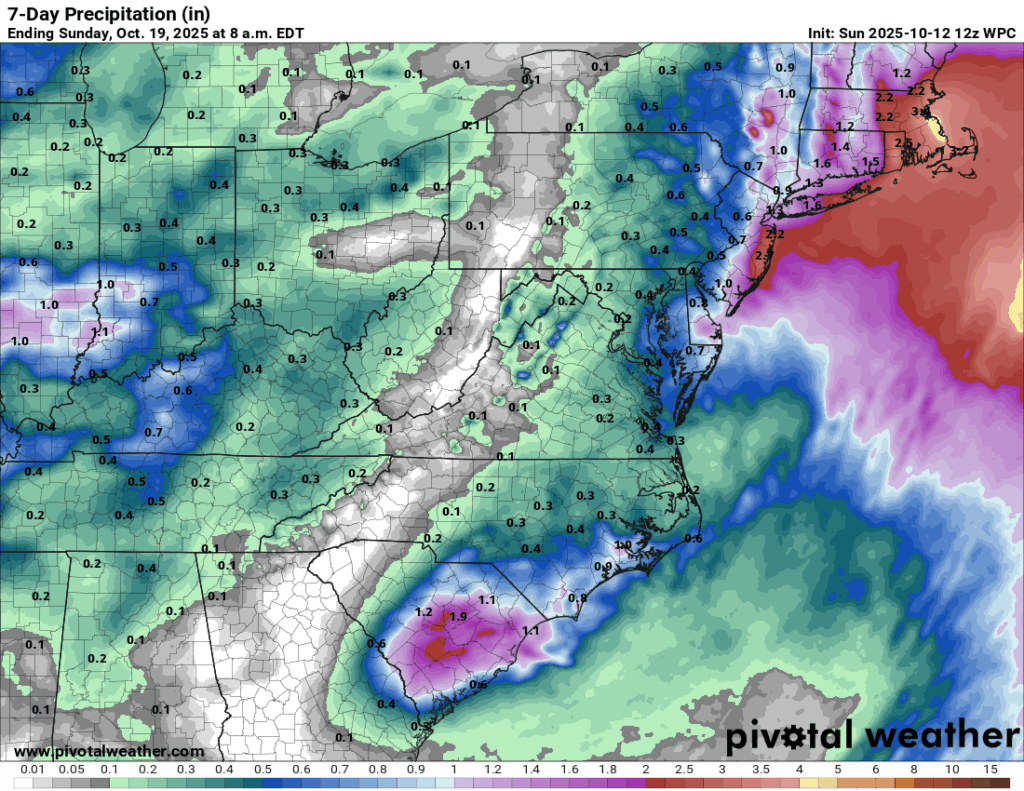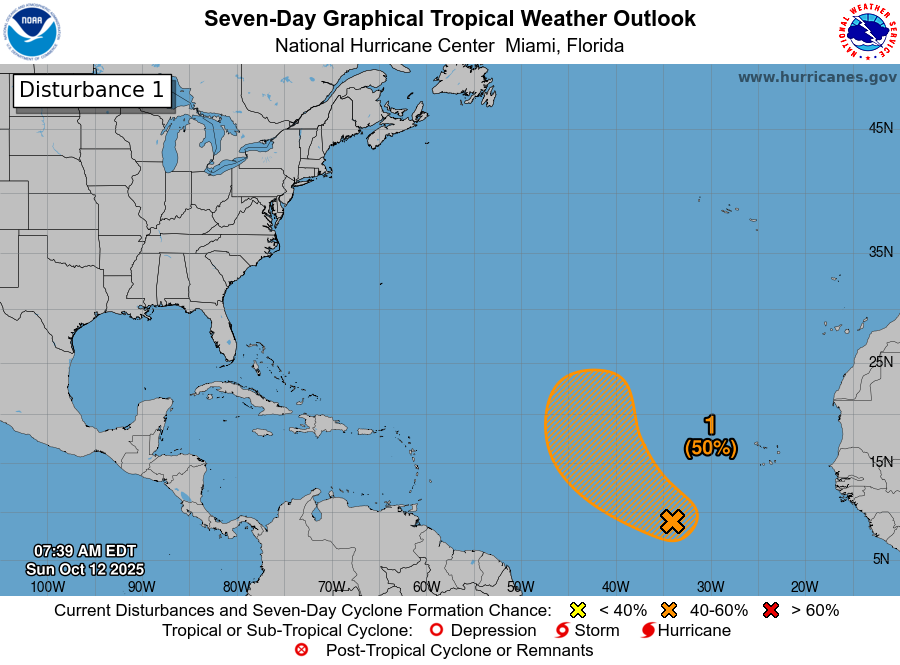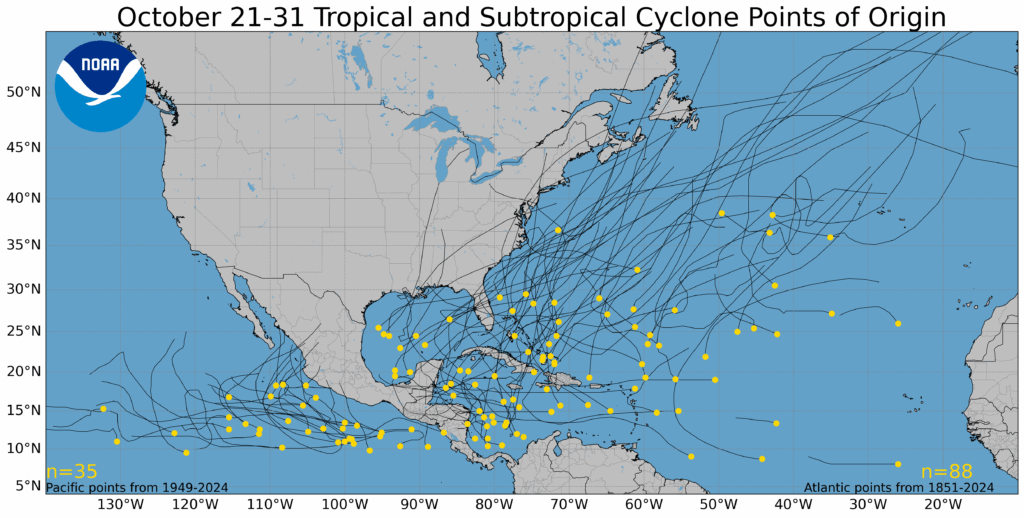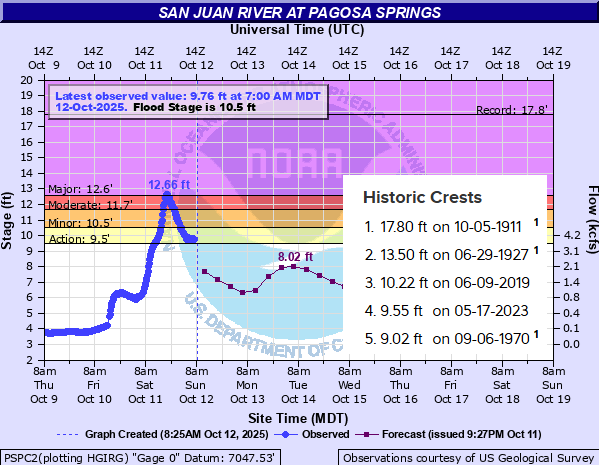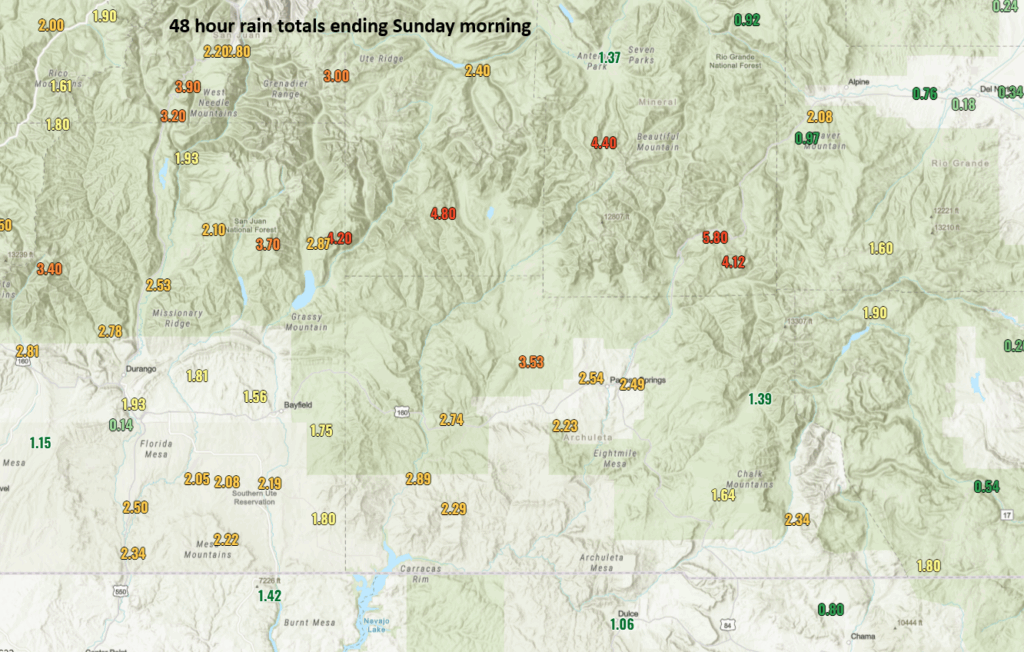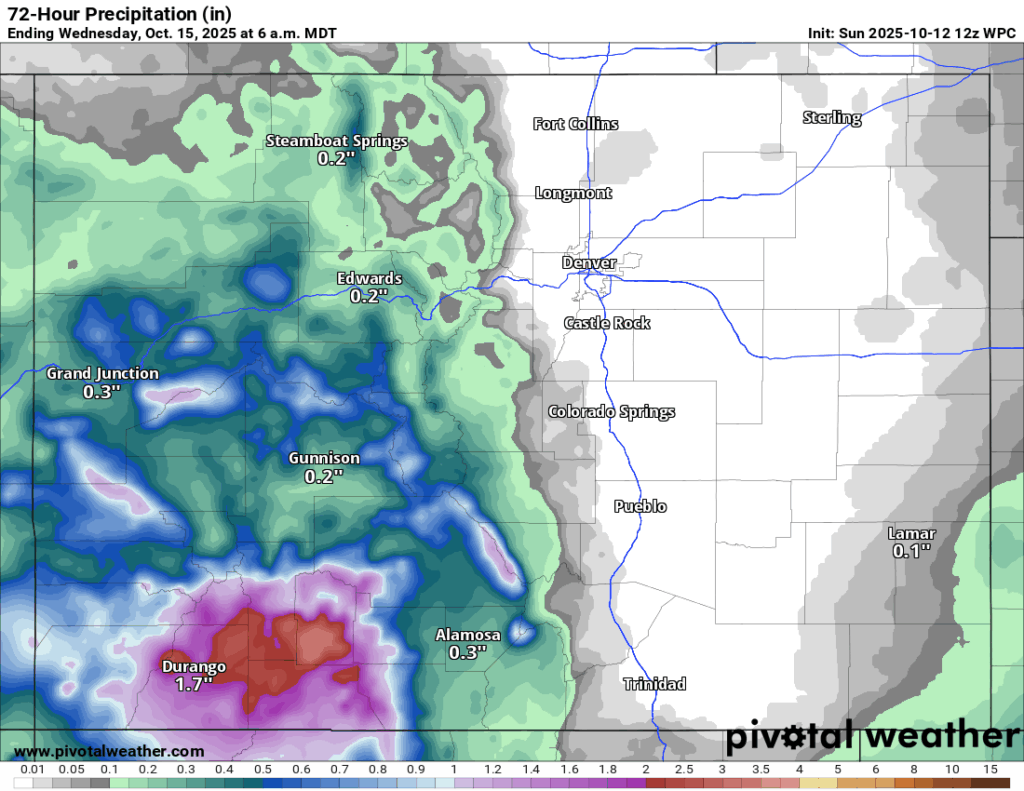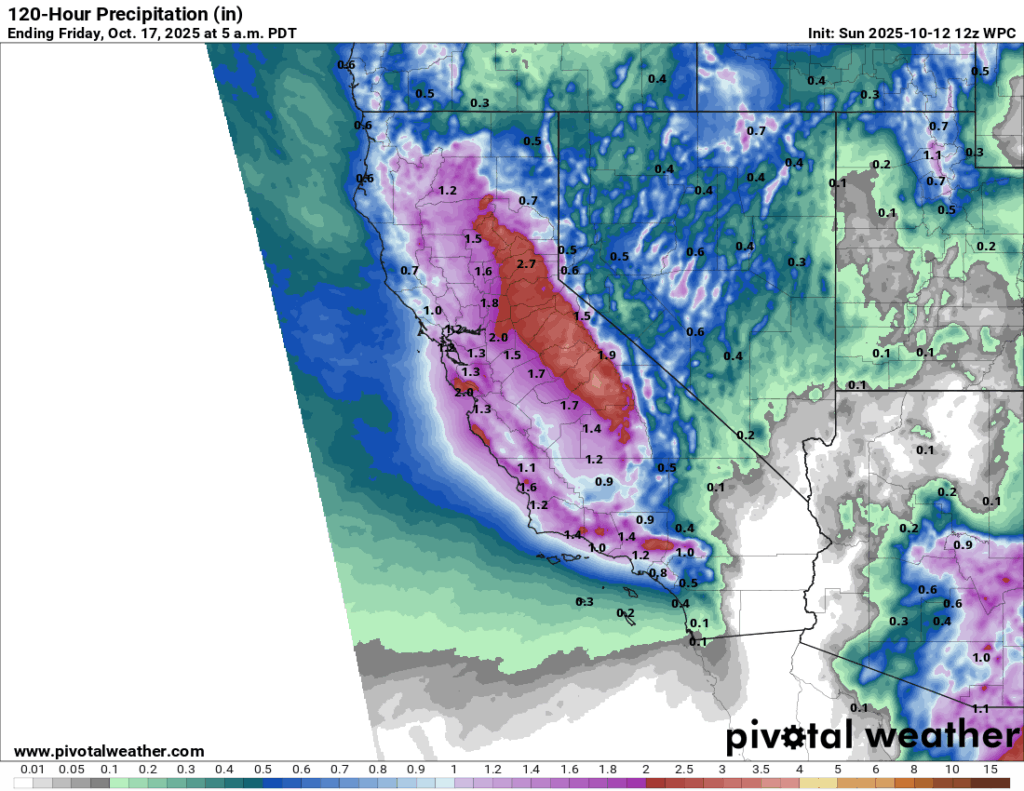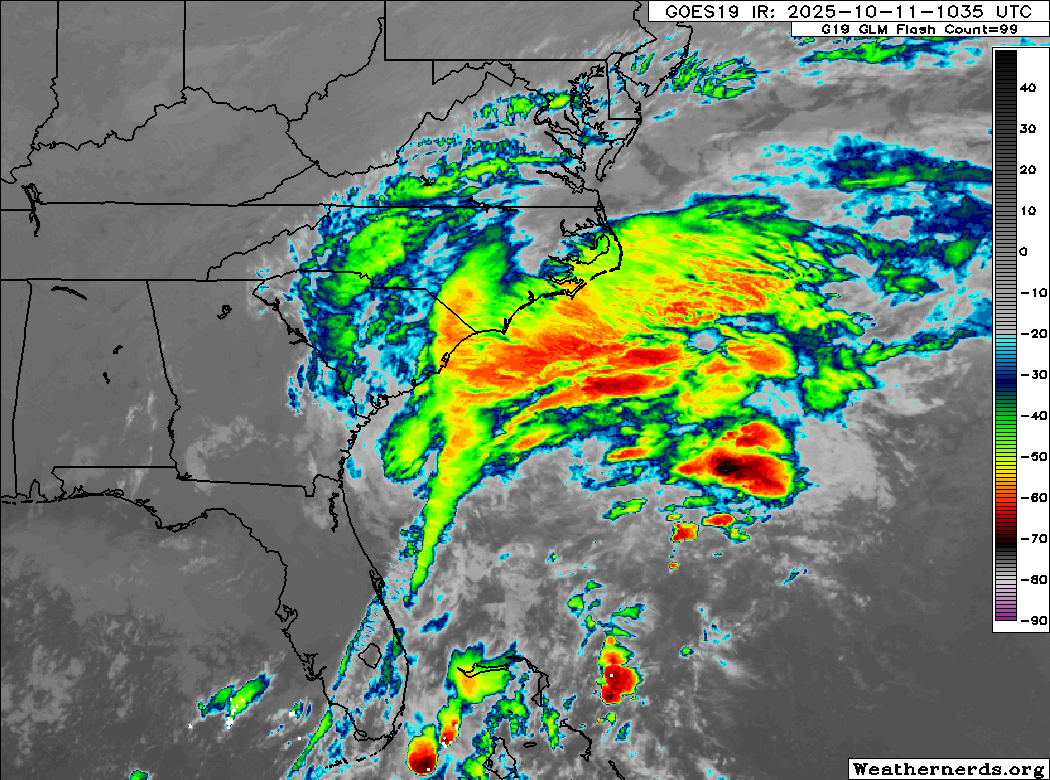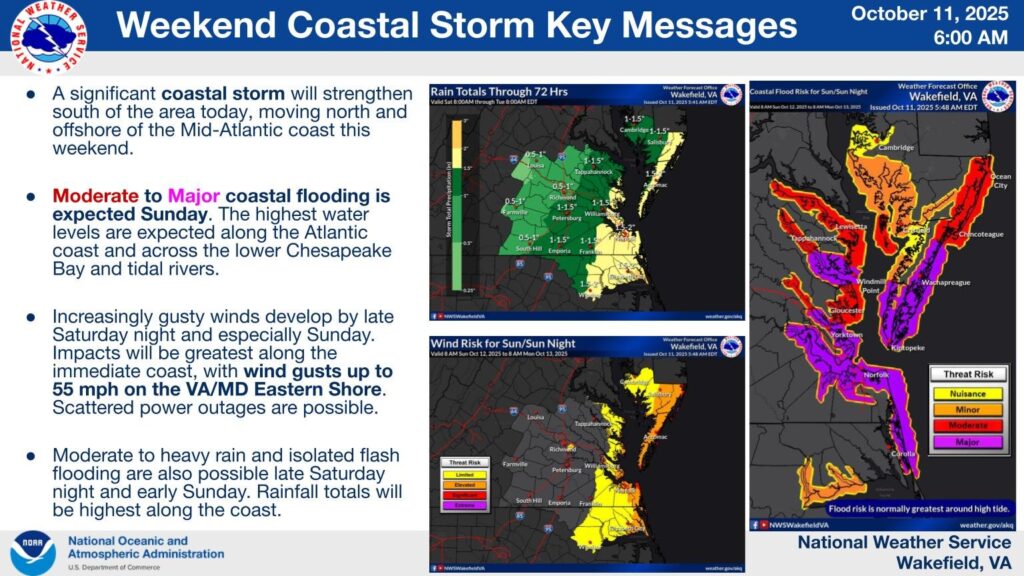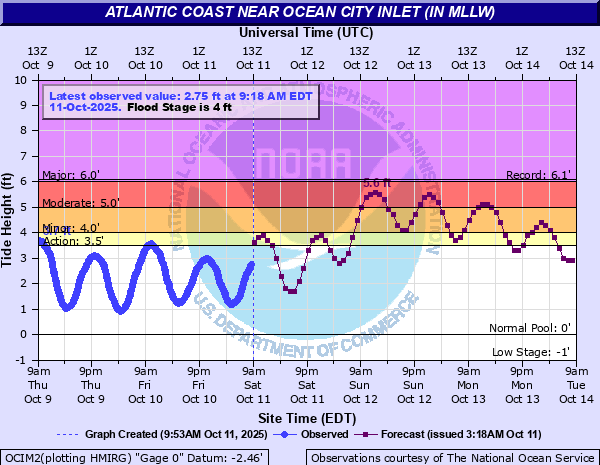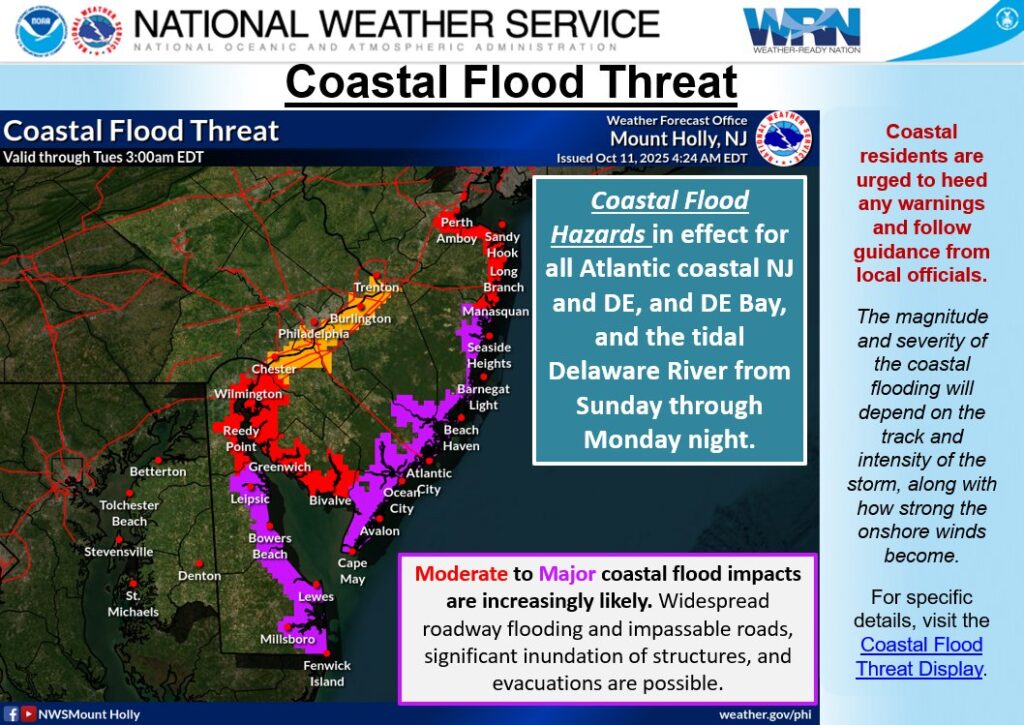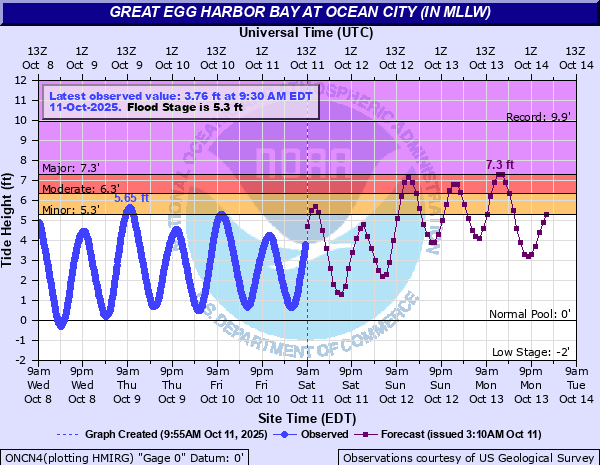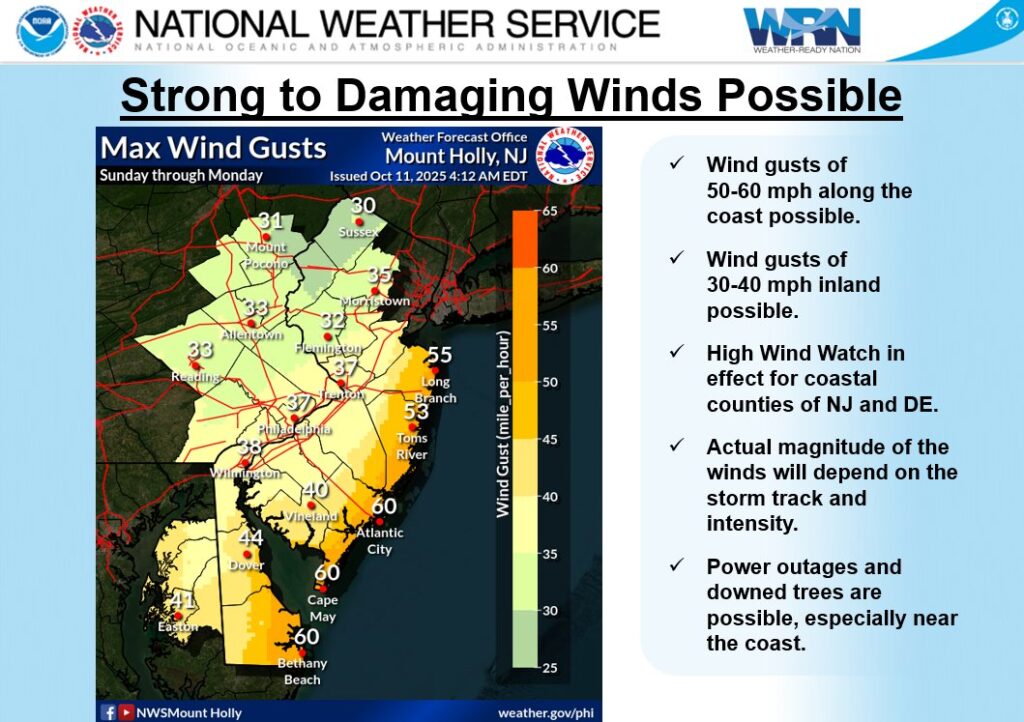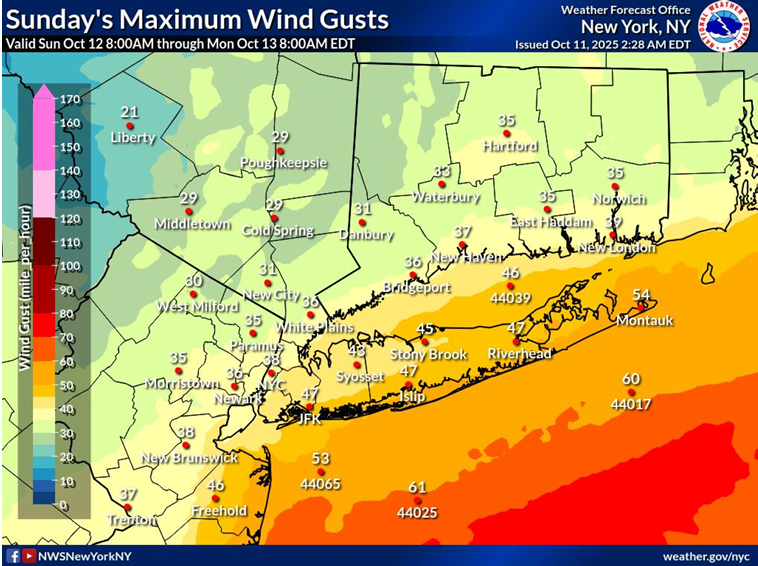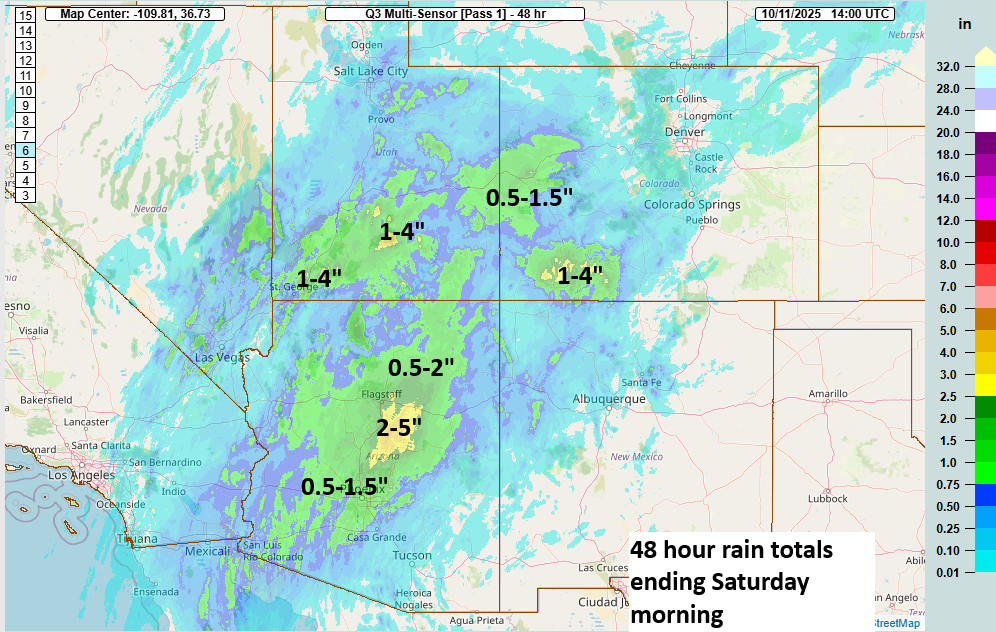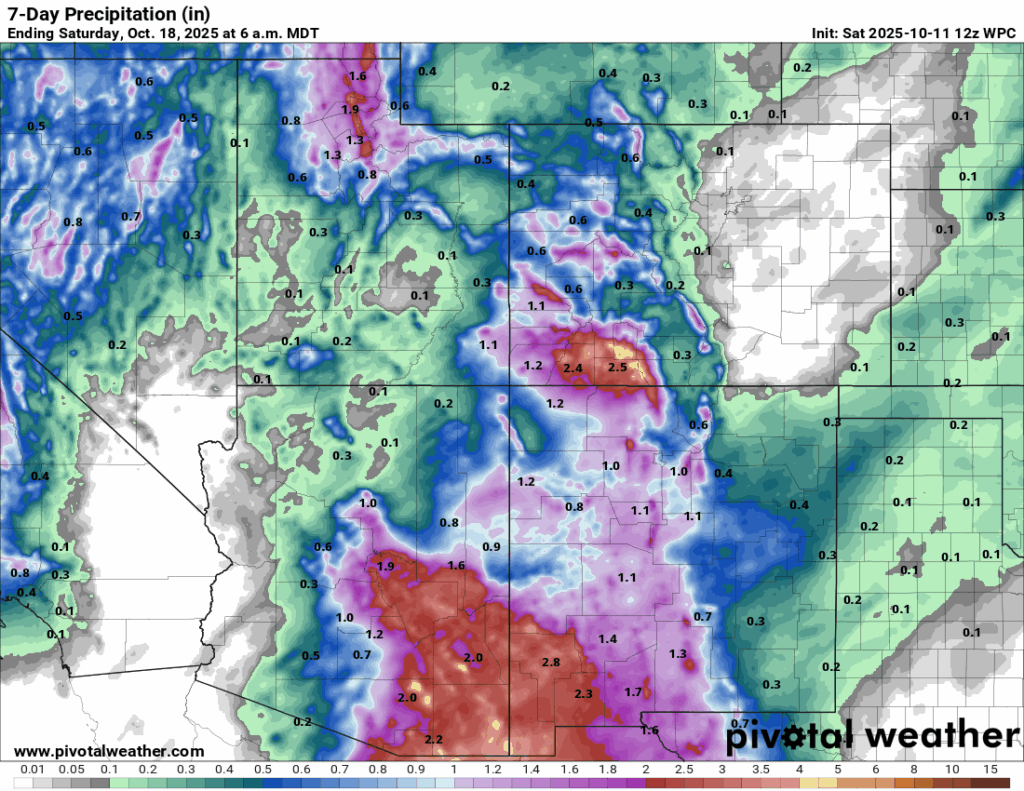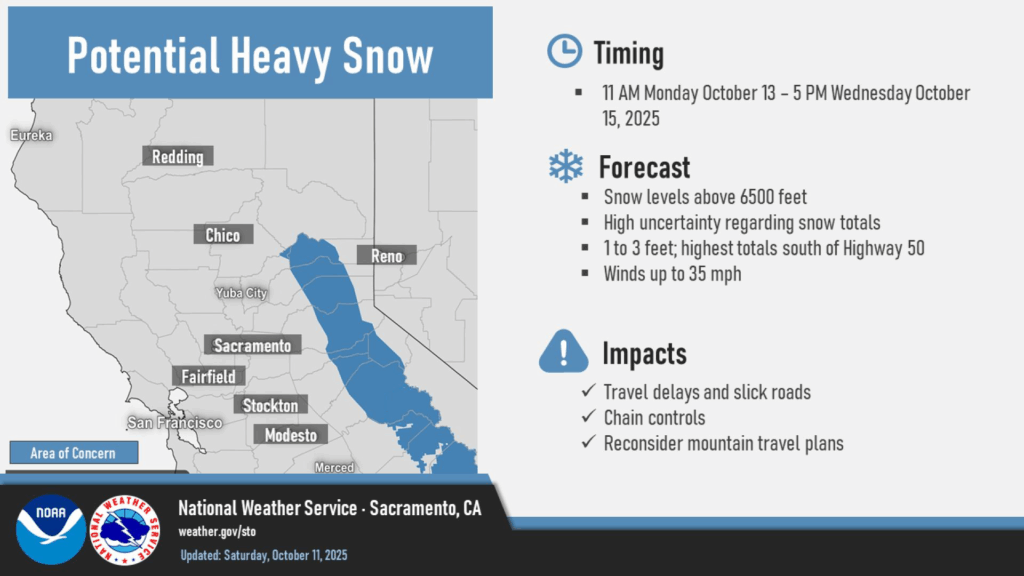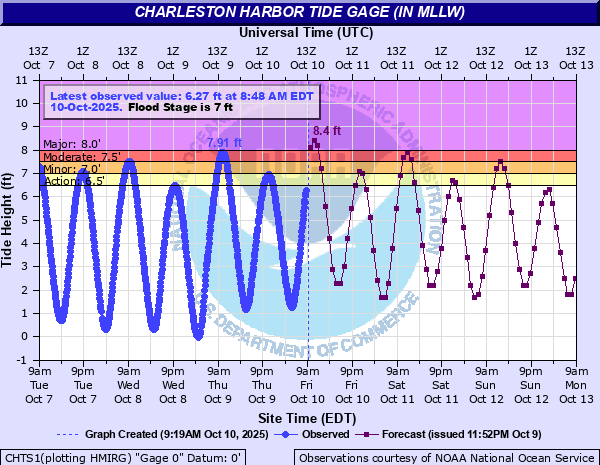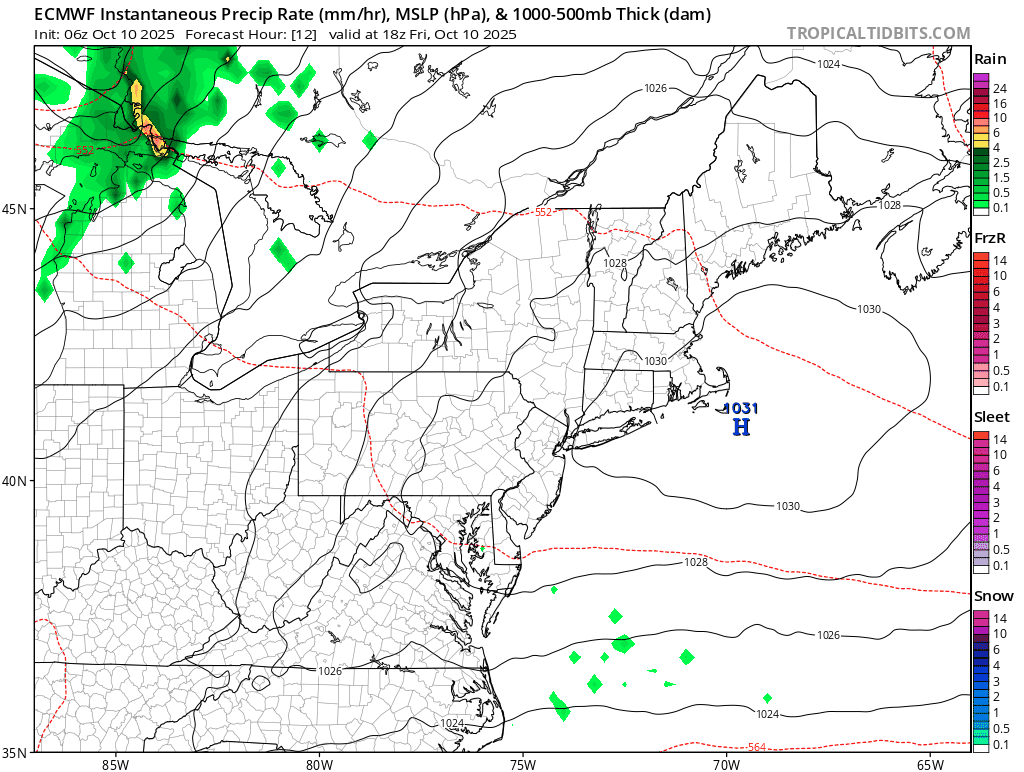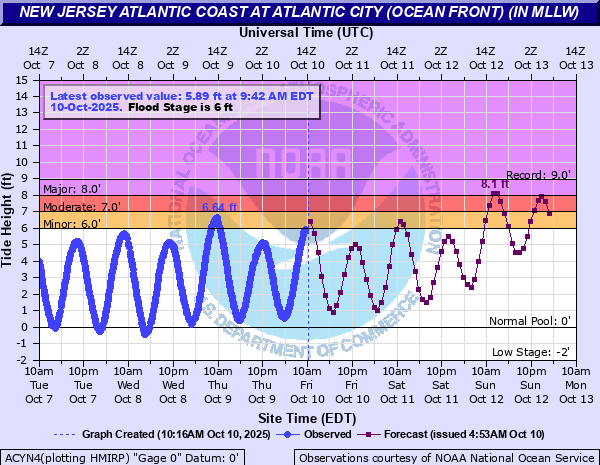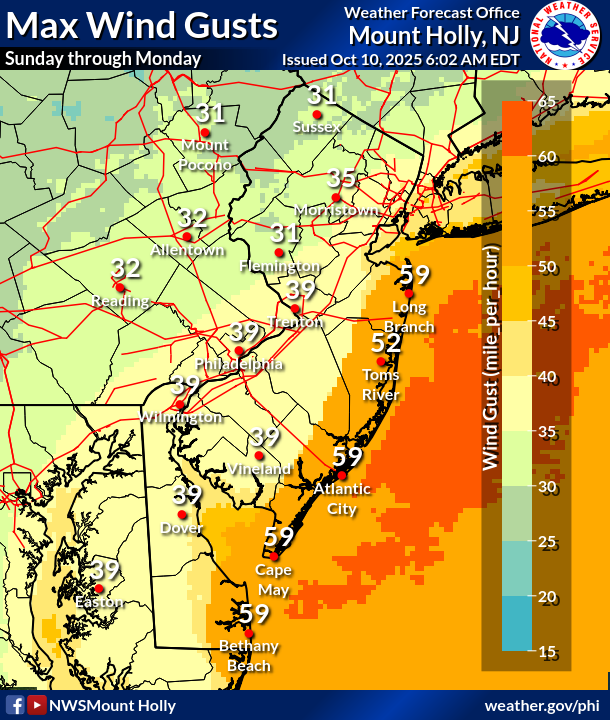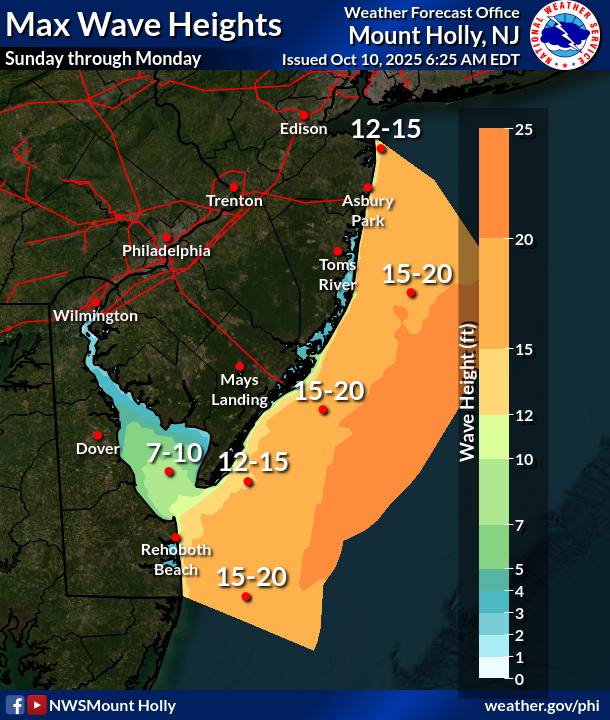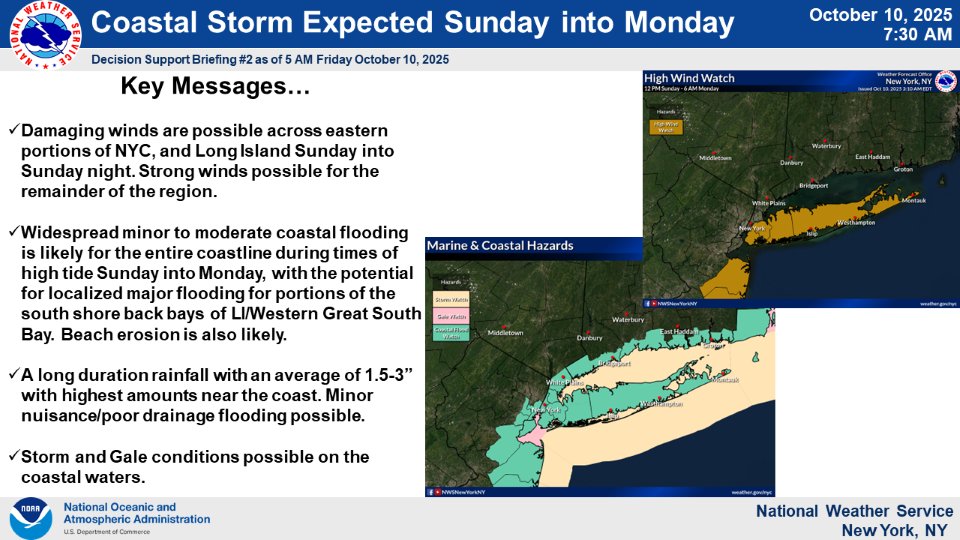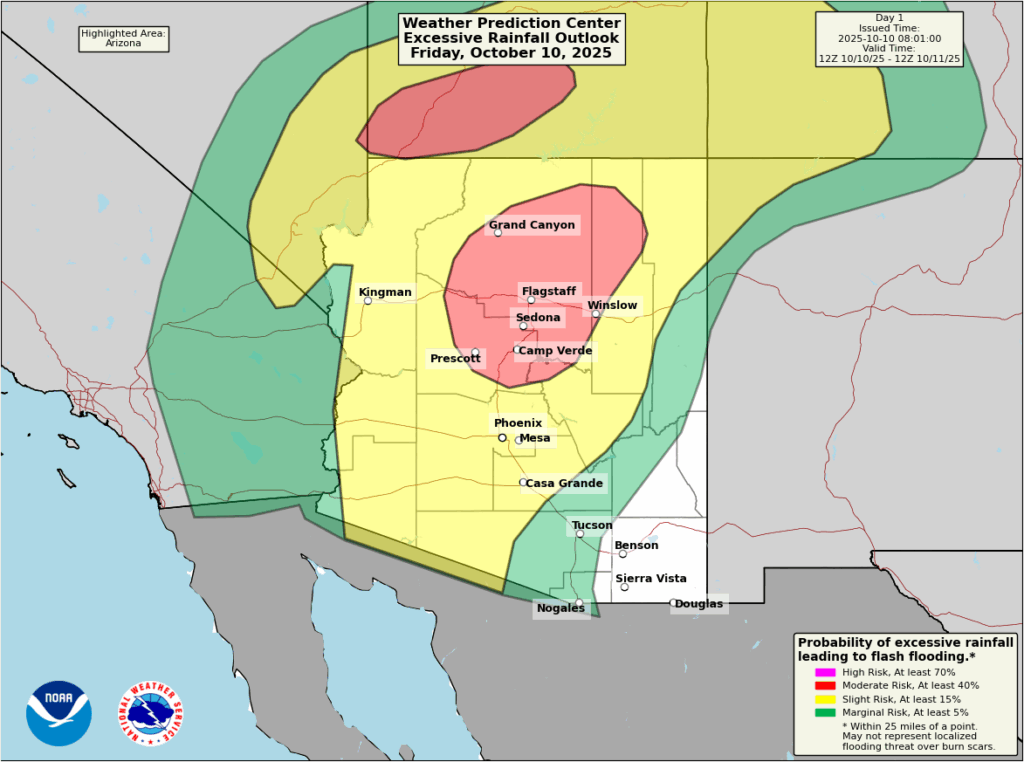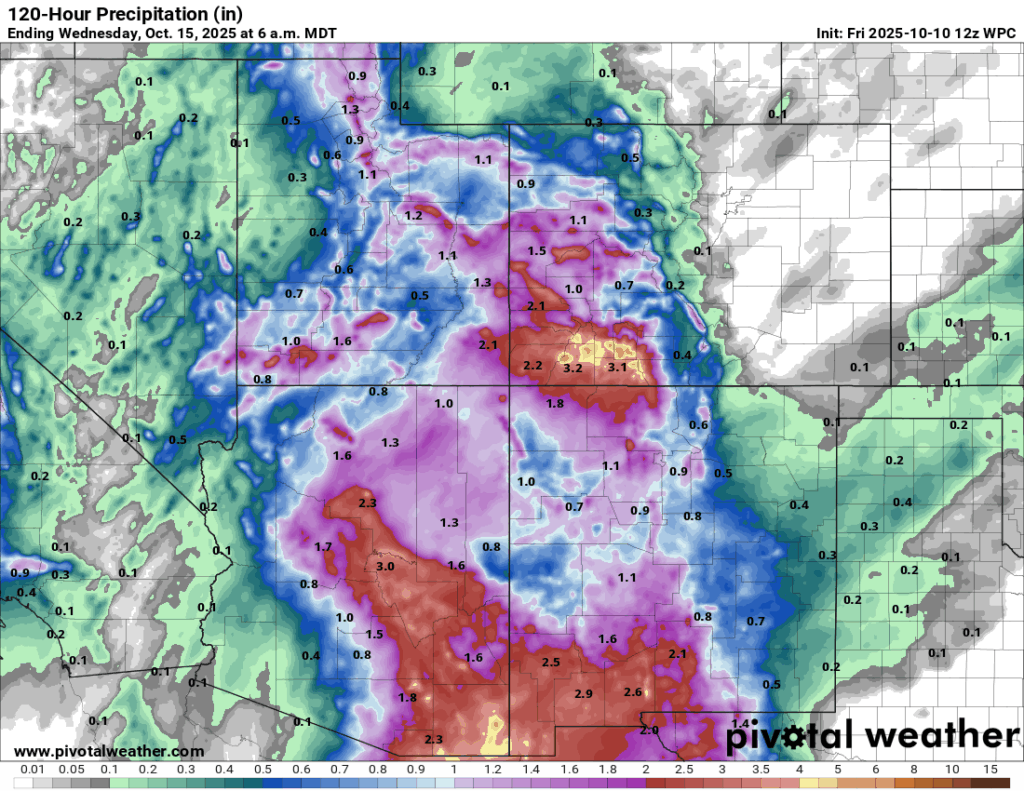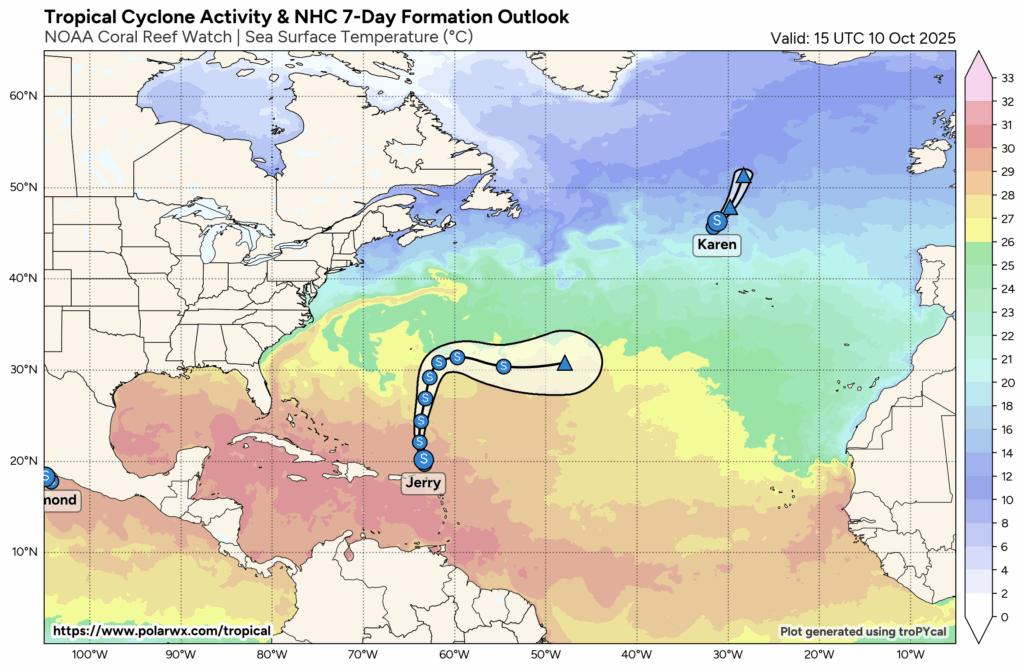In brief: Tropical moisture from the remnants of Raymond in the Pacific will deliver another round of potentially heavy rain to Arizona and especially southwest Colorado today. Additional flash flooding is possible. A major storm brings Sierra snow, flash flooding potential, and a chance of severe weather in Los Angeles tomorrow. The East Coast nor’easter’s tides seem to be underperforming a bit, but the winds and rain are not with gusts upwards of 70 mph in New Jersey. Tropical Storm Lorenzo formed and is no threat to land, but we are watching another possible system behind that.
West Coast storms bring high impacts
After Saturday flooding in Colorado, we had quite an active Sunday in the Phoenix area. Rain totals were anywhere from 1 to 3 inches across the Valley. Sky Harbor’s 1.97″ of rain for the day was the fourth wettest October day on record, as well as the 16th wettest day overall going back to 1895.
There was a Flash Flood Emergency issued at one point east of Phoenix in Pinal County. Water rescues were needed in Buckeye, freeways flooded in Mesa, and Globe, AZ reported flooding just weeks after deadly flooding hit. Overall, it was a very active Sunday in the desert.
Today, flood watches remain posted in southern Arizona, as well as in southwest Colorado, which experienced flooding on Saturday night. Another round of very heavy rain and tropical moisture is going to impact Colorado today, with perhaps as much as 1 to 2 inches or even more falling.
With the flood watch posted in Arizona, more of a localized type flooding may unfold there. Highest total rainfall looks to be north of Tucson and east of Phoenix today.
Meanwhile, the first big winter storm of the season will plow into California today and tomorrow with heavy rain, heavy snow in the Sierra, and even a chance of severe storms in the LA Basin. A marginal risk (level 1/5) for severe weather is posted there, primarily due to the potential for a squall line and isolated potential rotating cells on Tuesday morning. Basically, the chance of some strong wind gusts is in place, along with the chance of an isolated tornado for Los Angeles, mainly later tonight and early Tuesday morning.
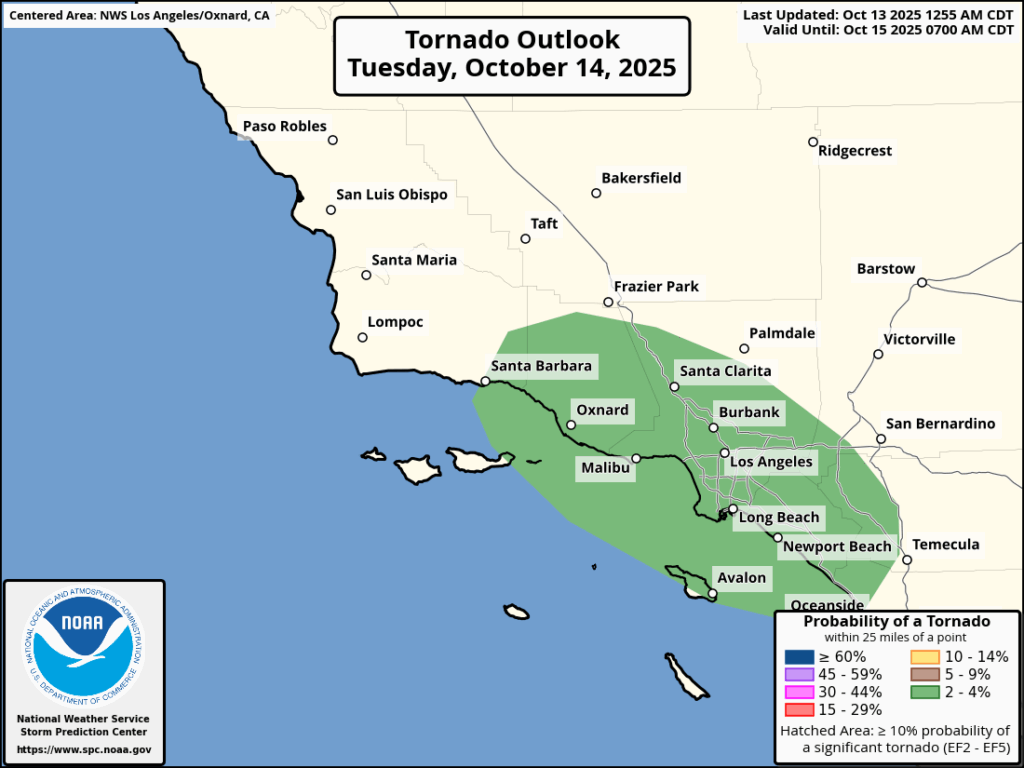
Heavy rain may also produce localized flash flooding, and flood watches have been issued for various burn scars in southern California, including Palisades and Eaton. Flood Watches are also posted for the Sierra foothills. Winter storm warnings are posted in the Sierra above 5,500 feet now for 1 to perhaps as much as 3 feet of snow.
The storm should clear from northwest to southeast later tomorrow and Wednesday.
East coast nor’easter performing with mixed results
We had another bit of an underperformance on high tides on the Jersey Shore with the midnight tide cycle. There is one more to come early this afternoon, and that will again at least threaten high-end moderate to major coastal flooding. At this point it also looks as though the tide cycle may allow for tide levels to come in a little under the forecast.
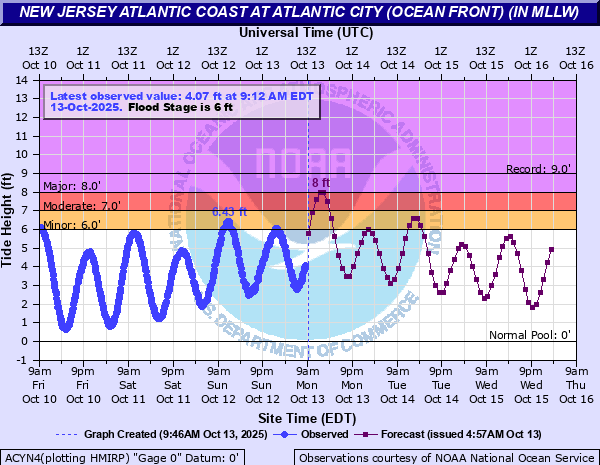
Why this is? I’m not entirely sure. But it’s been true up and down the Jersey Shore since yesterday. The forecasts farther south have been somewhat better. Tides to the north seem to have been fairly close as well, though perhaps a little higher than forecast in spots. Whatever the case, there is tidal flooding. It’s at least minor to moderate. And it will continue today for at least one more tide cycle this afternoon.
Heading into the rest of the week, tides will be elevated but should produce merely minor to no flooding.
The rain forecast has mostly checked in close to verification with 1 to 3 inches on the coast. Healthy, beneficial rains have occurred in southern New England as well.
Wind gusts have also done quite close to forecast. We did even have a 70 mph gust reported at Barnegat Light on LBI in New Jersey. Several other locations got above 60 mph as well.
Heading into the rest of today, conditions should slowly improve across the region. Winds will slowly back off as the day goes on. Rain should exit tonight. Tides should ease up a bit after this afternoon.
Tropics: Lorenzo…and more?
We did it. We again went from Invest directly to tropical storm. Lorenzo formed this morning in the open Atlantic. And that is where it shall stay.
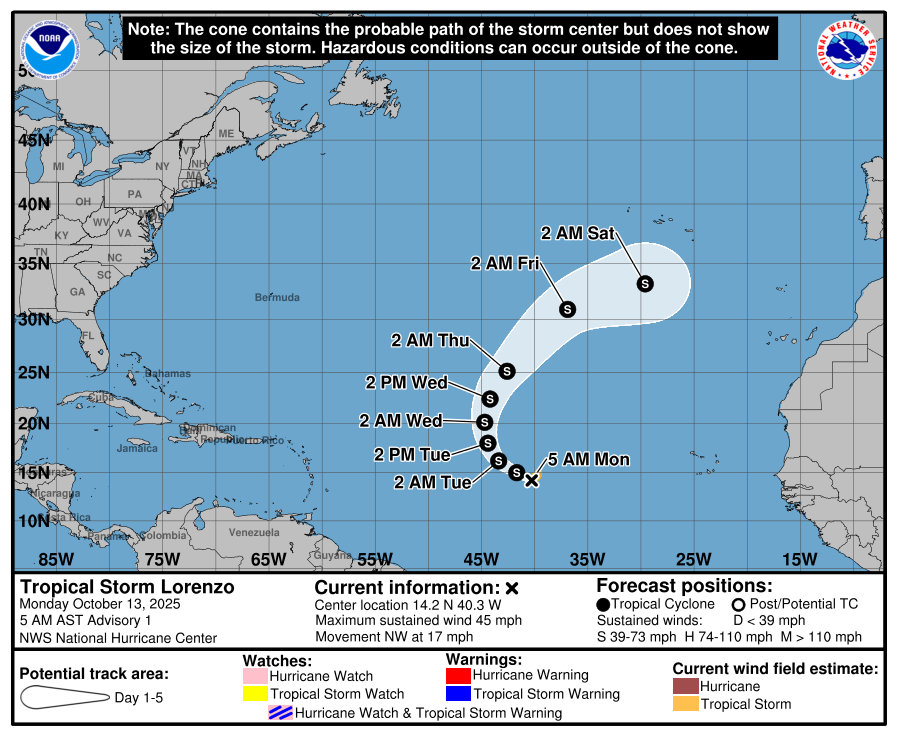
Lorenzo is expected to hook north and northeast and then east. There are some models trying to bring it back south and west. We will see if that happens, but every season seems to have one storm that does some sort of “special” track in the Atlantic. Lorenzo may be that storm this year. It is currently expected to remain a tropical storm.
Beyond Lorenzo, we are seeing some signs of another wave in the Atlantic at a very far south latitude that tries to sneak under everything and make it into the Caribbean. That would be quite out of the realm of normal for this late in the season. For now, it’s just speculation. But don’t be surprised if we start seeing some late season Caribbean noise (which is normal) in about 8 or 9 days. But suffice to say, the route there may be somewhat peculiar. We’ll keep watching.
